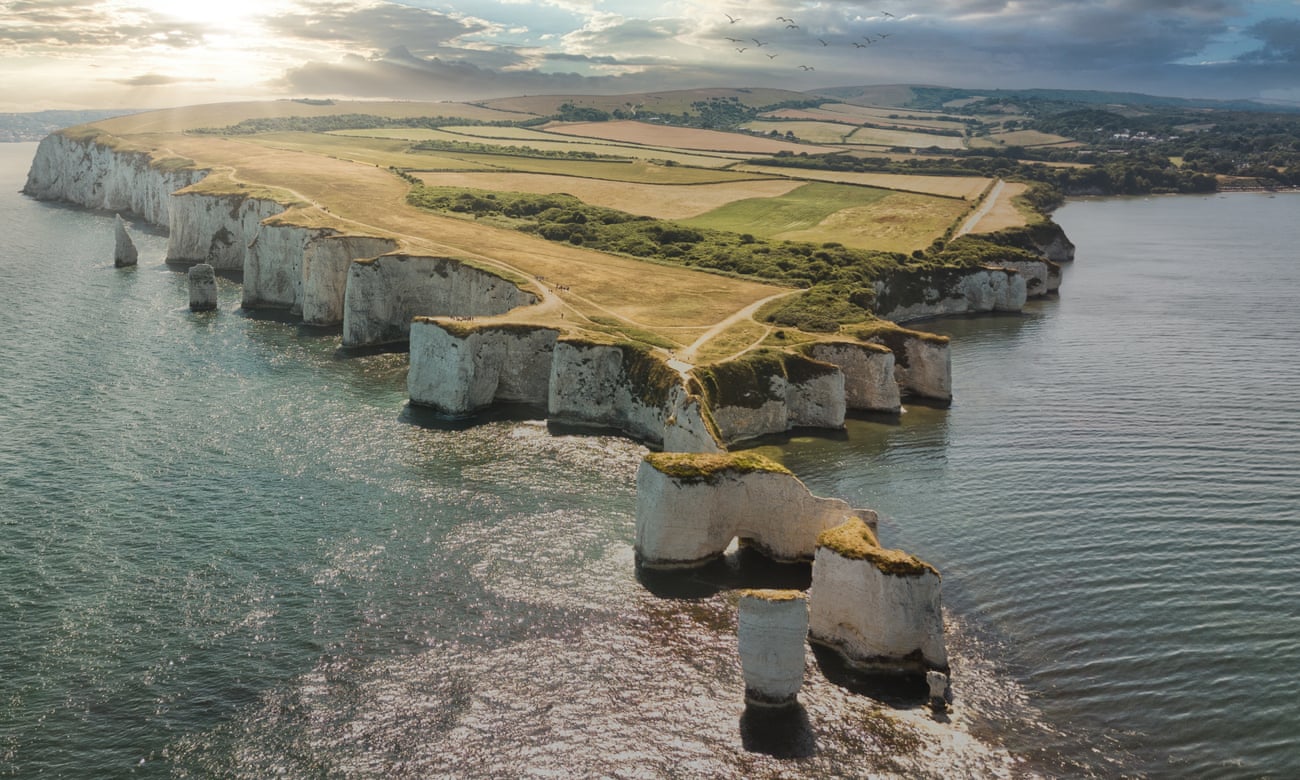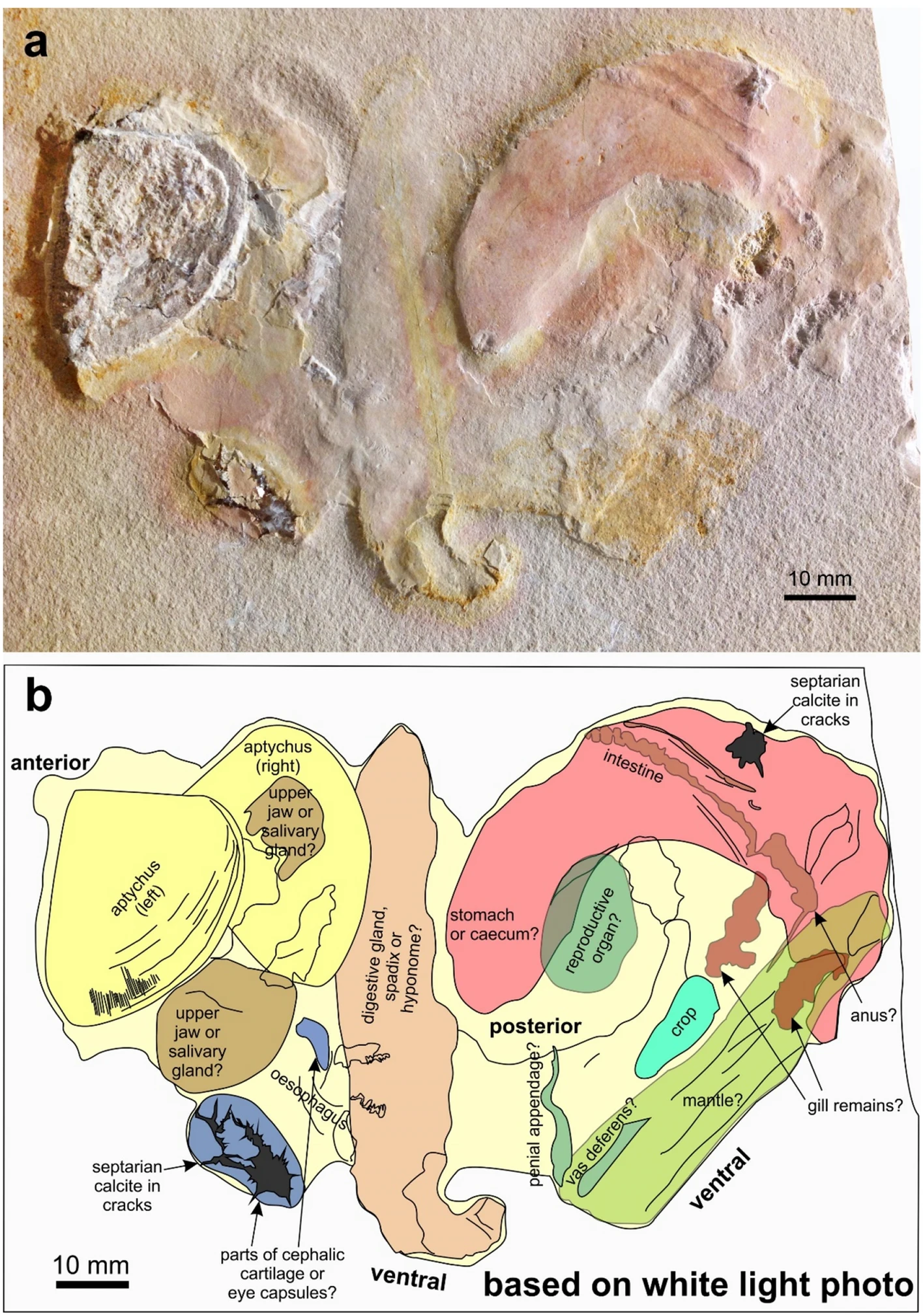Ammonite Unshelled!
THIS ARTICLE in the New York Times refers to THIS ACADEMIC ARTICLE and concerns an ammonite fossilized without its shell. Once I got over my bemusement - how do you recognise an ammonite if it doesn't look like an ammonite?! - I found the articles very interesting, especially how did it come to be out of its shell.
Soft parts of Subplanites sp. with a Strigogranulaptychus sp. from the early Tithonian of Wintershof near Eichstätt (Germany); SMNS 70,610. a Photo taken under white light. b Line drawing of the structures visible in the white light-photo (a) with possible interpretations
The Times tells us that ammonitologists (?) are excited. It took some time to give names to the various bits which look like smears to me - but then I am not an ammonitologist! There are not much written about the soft parts of ammonites, comparisons have to be made with living relatives such as Nautilus pompilius, but the authors are able to give names to all the bits and conclude that it was a male.
How the beastie got out of its shell is discussed in great detail in the academic paper. It either lost its shell after death or it was pulled out by a predator.
In relation to the latter there is AN INTERESTING PAPER from Lyme Regis Museum concerning fatally bitten ammonites which may be relevant.


